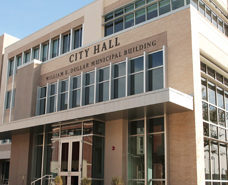Texas Governor Greg Abbott announced today that the current COVID-19 stay-at-home order will expire April 30. He also explained the beginning of a multi-phase re-opening plan for the state. Mayor Scott LeMay, the City Council and city staff will meet at 5 p.m. tonight, April 28, to discuss re-opening plans for the city.
Abbott’s Phase 1 plan, effective May 1 will include:
- Retail stores, restaurants, libraries, museums and theaters will be allowed to open at 25% occupancy.
- Hands-on museum exhibits must remain closed.
- Texas counties with five or fewer active cases may reopen the same types of businesses, except at a 50% occupancy rate.
- Outdoor sports played with less than four participants, such as tennis and golf, will be allowed to resume.
Abbott added that he hopes to add bars, gyms and hair salons to the list of open businesses by the middle of May, which is when, if all goes well with Phase 1, Phase 2, will begin.
Abbott talked about the need for more testing and tracing capability. This is a concern of LeMay’s as well as there are bound to be people who have been sheltering in place that have COVID-19 but do not have symptoms. Once everyone gets back out and back together, there could be a spike in new cases.
“Someone could be carrying it [COVID-19] but not know it and spread it to other people in line at McDonald’s or any number of other places,” LeMay said. “That’s my concern. From day one, there hasn’t been enough testing nationally, statewide, countywide or at the city level. We need to get an accurate count of who is walking around with it and doesn’t know it.”
He added that the 334 Garland cases that have been counted are only the ones that got sick enough to be tested.
In Dallas County, Garland is second only to the city of Dallas in the number of cases. Part of the reason for that is that Garland is one of the largest suburbs. It could also be attributed in part to the fact that its population includes a number of people who must go out to work every day because their jobs cannot be done from home. Additionally, there is a large population of economically disadvantaged people in Garland and many do not have access to quality healthcare.


